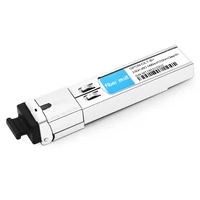High-speed internet connection is the need of the hour in the ever-changing world of computer network technology. Gigabit Passive Optical Network (GPON) is one of such advanced solutions that has emerged due to this demand. Ubiquiti GPON SFP Modules are very important for smooth and efficient data transmission through optical fiber networks. This article provides an overview of Ubiquiti GPON SFP Modules; it looks at their specifications, functions, installation steps, and practical uses, among other things. With a comprehensive understanding of these parts, one can know how they can help improve network capabilities, simplify tasks, or even outperform similar devices when deployed differently.
Table of Contents
ToggleWhat Are Ubiquiti GPON SFP Modules?
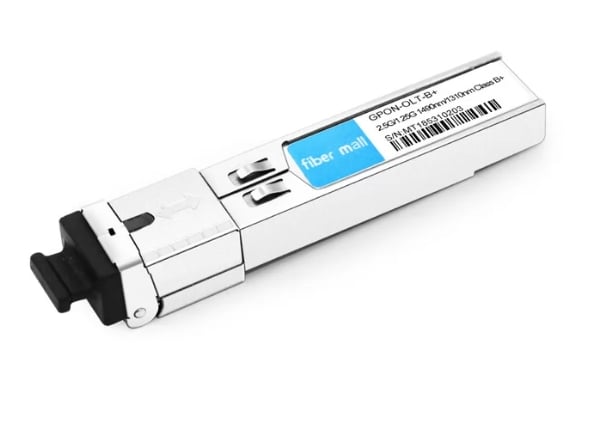
Understanding GPON and SFP
The gigabit passive optical network (GPON) is a system that allows people to access the internet at very high speeds using fiber optic cables. The GPON can split a single beam of light into many different signals for many users simultaneously, so no active device is needed in between, which saves money and power. GPON can do more than just provide web service, though; it is also capable of carrying voice and video information, which makes this type of network fantastic for businesses as well as residential areas.
The small form-factor pluggable (SFP) transceiver is a hot-pluggable module used in networking applications to connect fiber optic cables with network devices. SFP modules convert electrical signals into optical signals and vice versa, allowing data to be transmitted seamlessly across different types of networks. This means that administrators can easily modify or upgrade their connections whenever necessary as long as they have an SFP-integrated GPON system because it gives them more flexibility on how things are connected based on their specific needs at any given time. So when you combine GPON technology with these SFPs, then, what you get are cost-efficient internet speeds delivered right where they’re needed most.
How the Ubiquiti GPON OLT SFP Works
The Ubiquiti GPON Optical Line Terminal (OLT) SFP is an important link between the optical network and the user’s equipment. This is achieved by receiving data signals from the core network and converting them into optical signals suitable for transmission over fiber optic cables. In order to improve signal integrity and increase transmission distances, this involves various forms of modulation.
For wavelength division multiplexing within the OLT, an SFP module manages multiple GPON subscribers, which allows data to be sent simultaneously to several destinations. To ensure that the network is working at its best at all times, the entire system’s performance is continuously monitored by OLT, which detects any anomalies, takes corrective actions, and maintains high-quality signals even in case of failure points while providing wider coverage or range. Therefore, this approach enhances efficiency in general terms and reliability, specifically concerning GPON infrastructure, since there can be different service configurations supported with low latency and high throughput achieved at once.
Compatibility with Other Ubiquiti Products
The Ubiquiti GPON OLT SFP modules were done with compatibility in mind; they can work well with other products from the same manufacturer. Thus, they contribute greatly towards improving the performance of networking solutions. These SFP modules are designed to work with EdgeMAX routers and switches made by Ubiquiti, which also helps manage data more effectively while providing better connectivity options. Furthermore, this GPON OLT may be used with UniFi access points and security gateways manufactured by the company, thereby making it possible for network deployments to scale easily where necessary without compromising on infrastructure robustness. With this kind of interoperability at their disposal, users can always expect nothing short of complete networking solutions that suit their unique operational requirements when dealing with any part or aspect about Ubiquiti’s ecosystem.
How do you set up and configure Ubiquiti GPON SFP?
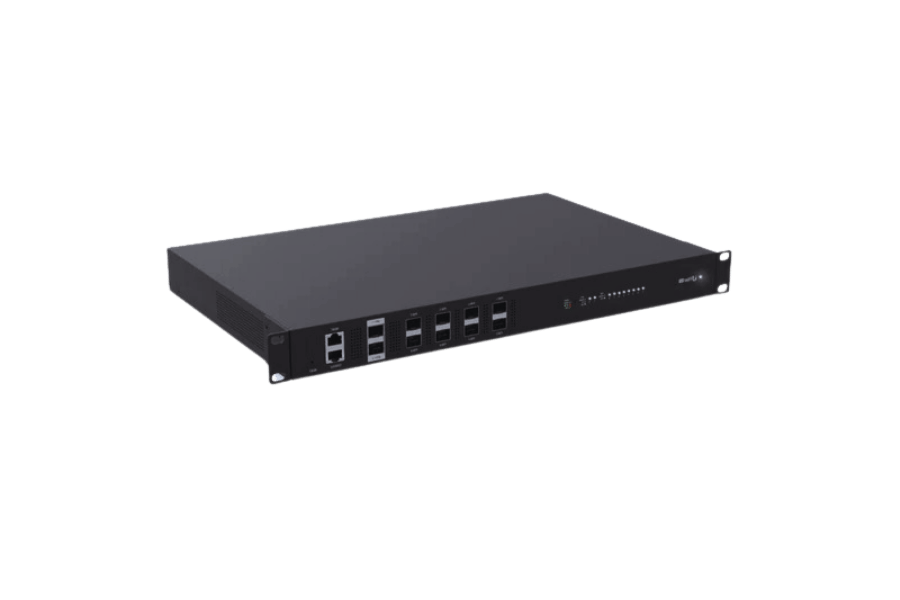
Step-by-Step Setup Guide
- Power Down Hardware: Before installation, make sure you switch off all networking devices.
- Install SFP Module: Gently insert the Ubiquiti GPON SFP module into its appropriate slot on the OLT (Optical Line Terminal).
- Connect Fiber Optic Cable: Connect one end of the fiber optic cable to the SFP module and another to its corresponding ONT (optical network terminal).
- Switch On Devices: Power up the OLT as well as other linked equipment.
- Access Configuration Interface: Use an Ethernet cable to connect a PC with OLT then via web browser access configuration interface.
- Login: Provide mandatory credentials for logging in to management interface of OLT.
- Setup GPON Parameters: Visit the GPON settings section and configure VLAN settings, bandwidth allocation, subscriber management, etcetera.
- Save Settings: Save configuration changes made so that they take effect.
- Monitor Network Performance: Employ performance monitoring tools in OLT to confirm proper functioning of GPON network.
- Perform Tests: Conduct network tests to check connectivity and signal quality across all subscribers.
Configuration Tips for Optimal Performance
Consider these best practices in order to optimize the configuration of Ubiquiti GPON SFPs:
- Frequently Update Firmware: Always ensure that OLT and SFP module firmware are updated, so as to take advantage of new features and security improvements.
- Use Good Quality Fiber Optic Cables: Signal losses need to be minimized by investing in high quality fiber optics which can maintain integrity over longer distances.
- Configure VLAN’s Optimally: Segregate traffic more effectively by customizing VLAN settings thus enhancing management while reducing possible congestion points.
- Monitor Bandwidth Allocation: Review how bandwidth is distributed continuously; this should be done in such a way that subscriber needs are met without much contention occurring.
- Implement Redundancy Measures: Network reliability can be improved through introducing backup systems as well as redundant critical components.
- Regularly Perform Performance Evaluations: Establish network performance baseline using onboard monitoring tools, then undertake regular reviews against it, making necessary adjustments along the way.
- Keep Record Of Configuration Changes Made – It is important to document all configuration changes made including what was changed, why it was changed, who changed it and when they did so for future reference or troubleshooting purposes.
Following these guidelines will help users increase the dependability and efficiency of their GPON networks, thereby achieving the best operational performance.
Common Setup Issues and Troubleshooting
While implementing the Ubiquiti GPON SFP setting, some issues that are common may hinder its performance. Here are the problems with typical configurations and their possible solutions:
- Signal not Detected: If there is no signal detected on the client side, ensure that fiber optic connections are properly secured without any damage. Confirm also if SFP module is compatible with OLT.
- Slow Network Performance: When subscribers experience slow connectivity, it could be due to misconfiguration in bandwidth allocation, which results in mismatched settings. Another solution can be optimizing VLANs for better traffic management.
- Intermittent Connectivity: Fiber connections should be physically checked for breaks or bends especially when users face intermittent disconnections. It may also be necessary to test for too much signal loss caused by poor-quality cables.
- Firmware Issues: If certain functions do not work as expected, find out whether both OLT and SFP modules’ firmware versions are up-to-date because using outdated firmware can introduce bugs or affect stability.
- Configuration Errors: Misconfigurations can result in different operational problems, so it is always a good practice to cross-check the setup against recommended best practices documented elsewhere.
Following a systematic approach while troubleshooting these common challenges will help users maintain a stable as well as efficient GPON network environment.
What Do Customer Reviews Say?

General Satisfaction with Ubiquiti GPON SFP
Most customers are happy with how well Ubiquiti GPON SFP modules work and their reliability. They also like that these units are easy to integrate into the existing system and keep the connection speed high. What’s more, people say that for its price range, Ubiquiti is simply unbeatable in terms of value for money; many users find it even better than more expensive brands they’ve used before. Nonetheless, a few users have complained about firmware updates taking too long or not getting any response from the technical support team at all – which indicates that while most hardware is up to standard, if not beyond it, there could be some improvements made on behalf of user support functions.
Notable Pros and Cons Mentioned by Users
Advantages:
Performance: I have had a lot of users who experienced strong and reliable performance with Ubiquiti GPON SFP modules, hardly ever going down and offering very fast connection.
Ease of Installation: This product is quite easy to install. The SFP modules can easily fit into the existing system without much configuration needed.
Cost-Effectiveness: It’s impressive for its price. Compared with other brands, Ubiquiti offers cheaper quality products, thus making it better value for money during network upgrades.
Disadvantages:
Firmware Update Issues: Some colleagues have faced problems when trying to update their firmware; they claimed that it was not as intuitive as expected, which led to some temporary functional problems.
Response Time for Technical Support: Although the hardware performs well, my observations on technical support response time suggest that it should be reduced significantly to improve overall user experience.
Limited Documentation: The documentation sometimes does not cover all advanced features in depth, which may present difficulties during setup and troubleshooting for some users, including myself.
Performance and Reliability Feedback
It is evident that Ubiquiti GPON SFP modules perform well and are reliable in many network setups. People always say that they have fast internet connection speed all the time, and hardly ever experience any downtime – both of which are important for businesses to keep running smoothly. Another thing about these modules is that they can work with a wide range of network systems; this makes them even more dependable. Nonetheless, it should be remembered that stability may vary depending on system configurations as well as environmental factors beyond control. It would therefore be necessary for one to do regular checks so as maintain efficiency over long periods of usage.
What Makes Ubiquiti GPON SFP Stand Out?
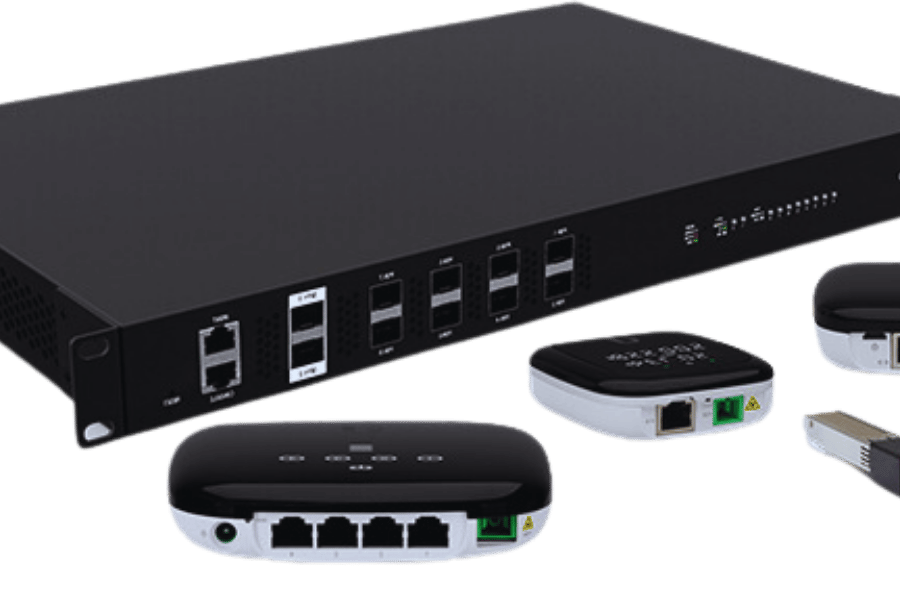
Product Features and Specifications
There are a number of reasons that make the ubiquiti GPON SFP module unique. To start with, it is multi-speed and supports any data rate of up to 2.5 Gbps which allows for more demanding applications where bandwidth is crucial. Secondly, these modules comply with the IEEE 802.3ah standards so they can work well with different optical networking devices.
As far as specifications are concerned, standard LC connectors have been used on them, making their integration into existing systems easier than ever before. They are also strong enough (operating temperature from -40°C to +85 °C) to withstand harsh outdoor conditions if needed. Also included are built-in error detection capabilities aimed at stabilizing connection quality and minimizing data losses during transmissions.
In summary, this means that ubiquiti GPON SFP modules should always be your go-to option whenever high performance networking equipment is required since not many other brands offer such variety or flexibility in their product range which might suit various needs perfectly well depending on what exactly one may be looking for at any given point in time!
Advantages Over Competitors
After comparing the Ubiquiti GPON SFP modules to those provided by competitors, I can say that they have several unique features. First and foremost, the performance to price ratio is amazing; Ubiquiti offers high-quality modules at a lower cost than other brands which makes them perfect for budget projects without sacrificing any specifications. Another advantage is their wide optical networking equipment compatibility – it significantly reduces possibilities of integration issues with different manufacturers’ products.
,Additionally, these units are really tough – they work well even under extreme temperatures, so you can use them in any environment without worrying about failures due to heat or cold. What’s more, built-in error detection capabilities greatly improve connection stability thus ensuring top network performance at all times. In general, terms like this not only indicate that among various tasks related to networking one should choose Ubiquity GPON SFP modules but also establish itself within the industry as a whole.
Unique Selling Points
When I evaluate the Ubiquiti GPON SFP modules, several unique selling points keep coming up. First of all, their versatility is outstanding; these modules can work on any network environment without a hitch, ranging from large enterprise setups down to small deployments. Again, I realize that they use quality optics, which is a clear indication of a commitment to good manufacturing practices aimed at enhancing data transmission performance. Equally important is their ease of use aspect, where even people with limited technical know-how can easily install them due to user-friendliness in design. Last but not least significant is the strong customer support provided by Ubiquiti itself, which adds value to usability since one always knows that help will be available if required. Such things make this product more than just another option among many others – it has become the best choice ever for reliable networking solutions!
Is Ubiquiti GPON SFP Right for Your Network?
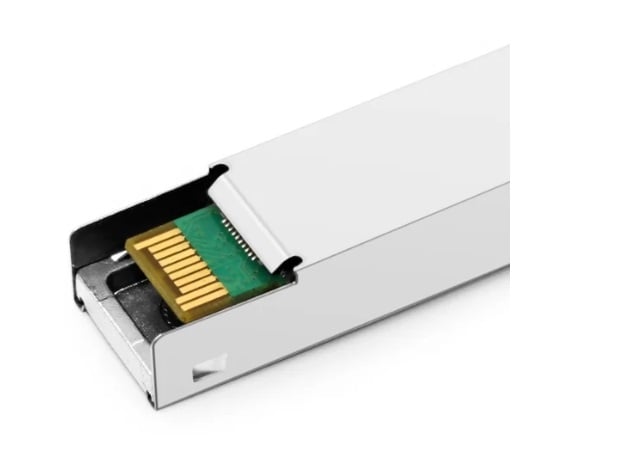
Ideal Use Cases
In my opinion, a wide range of applications is available for the Ubiquiti GPON SFP modules. These offer an excellent solution in situations where data should be transmitted at high speeds. This may be required by telecommunication companies, which need a reliable infrastructure most. Moreover, educational establishments can also benefit from this technology as more people started studying via the Internet due to COVID-19 pandemic outbreak. Furthermore, small and medium enterprises looking for cheap but effective solutions without sacrificing performance will not find anything better than these devices because they are so versatile! So in conclusion – if you want your network to work well no matter what industry or user requirements it serves then use Ubiquiti GPON SFP modules!
Comparisons with Other Brands
I have discovered quite a few interesting differences between Ubiquiti GPON SFP modules and its competitors. For example, some alternative brands do not offer as good reliability as them nor are their specifications high performance. Many other companies lack in terms of customer support but this is not the case with Ubiquiti; they provide a very strong help system.
While Cisco might have more complicated configurations suitable for larger enterprises, their design is still user-friendly enough that people with various technical skills can use it. It should also be noted that although there may be other brands who can deliver similar performances they often charge much more money for them thus making Ubiquiti much more affordable without sacrificing quality. In terms of my personal choice I lean towards Ubiquiti because of their great balance between high performance, cost effectiveness and reliable support which could satisfy both individual and company networking requirements alike.
Cost vs. Benefit Analysis
When I do a cost-benefit analysis of Ubiquiti GPON SFP modules, it becomes evident that the benefits are much more than the initial capital investment. These are competitively priced hence they allow for huge returns on investments especially when weighed against their long-term operational savings acquired from reliability and performance. From different sources such as top technology review sites among others; one can only conclude that not only do they reduce maintenance costs due to durability but also increase productivity by enhancing network efficiency.
What’s more, is that they offer scalability options that can be matched with specific needs, thus saving on unnecessary expenditure brought about by buying too much capacity that will not be used up fully. In addition to this, the wide support system offered by ubiquity lowers troubleshooting risks as well as future upgrades, thereby making my choice even stronger. All in all, these facts put forward by cost efficiency savings, profitability ratios and reliability indicators make them an excellent investment choice both for single users or organizations seeking to streamline their networks’ capabilities
Reference Sources
Frequently Asked Questions (FAQs)
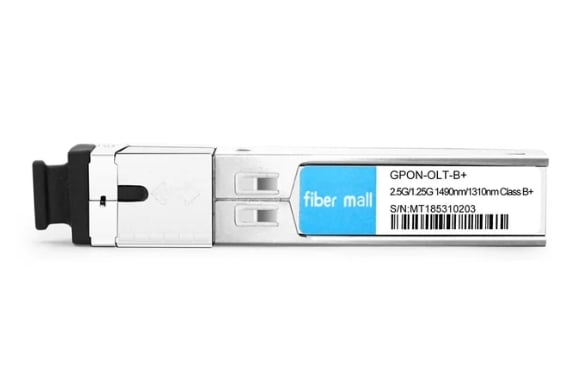
Q: What is an Ubiquiti GPON SFP Module?
A: A Ubiquiti GPON SFP module is a small form-factor pluggable (SFP) transceiver designed for use with gigabit passive optical networking (GPON) systems. Such a module allows internet service providers (ISPs) to connect their customers to high-speed fiber optic networks.
Q: How does the Ufiber GPON SFP module work?
A: The Ufiber GPON SFP module works by plugging into ports on a GPON optical line terminal (OLT), which sends and receives data between the ISP and the customer’s optical network unit or modem. These modules change light signals into electrical ones so they can travel over copper cabling within an Ethernet network.
Q: What devices are compatible with Ubiquiti GPON SFP Modules?
A: Various devices can be used in conjunction with Ubiquiti’s GPON SFP modules, including MikroTik, Netgear, or Supermicro, as well as their own products, such as Ufiber OLTs, UDM-Pro routers and UF-RJ45-10G media converters from the UniFi range.
Q: How do I install a Ubiquiti GPON SFP Module?
A: To install one of these units you simply insert it into an available slot on your OLT; make sure it clicks into place securely before connecting your fibre optic cable(s) to its corresponding port(s). After that you might have to configure this device through NMS – network management system.
Q: What are some advantages of using Ubiquiti’s GPON SFP modules?
A: First, all the speeds provided by them are fast enough for most applications. Second, long-range connections over single-mode fibers are supported. Third, easy compatibility with existing infrastructure makes migrating from another vendor painless. Last but not least, the hot-swappable feature lets you do upgrades or maintenance in a blink.
Q: Do Various Kinds of Ubiquiti GPON SFP Modules Exist?
A: Yes, different types of GPON SFP modules are available in Ubiquiti to meet different networking requirements. For instance, the UF-GP-B module is meant for Ubiquiti’s OLTs, while other modules may be designed for use in different environments or with varying types of devices.
Q: How can you compare them with other brands?
A: While MikroTik and Netgear, among others, have their own strengths and weaknesses, it is generally agreed that these devices are reliable because they work well with other products from the same company, thus supporting communities built around them, such as forums, etcetera, which offer better services than those provided by competitors like Mikrotik or Netgear.
Q: What does an OLT do in a GPON network?
A: An Optical Line Terminal (OLT) plays an important role within any given GPON infrastructure as it acts as a bridge between Internet Service Provider (ISP) on the one hand and multiple Optical Network Units (ONUs) on the other. In simple terms, this means that all data coming into these units goes through this device before being sent back out again so that users connected via fiber optic cables can access internet services easily without much hassle at all times during daylight hours which may also vary depending upon location etcetera but mainly remain constant throughout most parts worldwide except some remote areas where there could be power failures sometimes leading into darkness until morning when electrical energy supply resumes.
Q: Can they be used in data centers?
A: Yes, they can be used wherever there is a need for high-speed fiber optic connections especially large-scale environments or organizations such as data centers where many servers communicate over long distances using light signals through thin glass threads thus providing faster transmission speeds compared to copper wires which have higher resistance levels against electric currents thereby causing more heat loss during transfer process leading into slow transfer rates between devices connected together within same network segment.
Q: What support is there for them?
A: User manuals and installation guides are available for these products on official websites, as well as active community forums, where people can share ideas and discuss common problems encountered during the usage of such gadgets. Firmware updates and technical help from Ubiquiti Networks staff are also provided to ensure better performance at all times.

